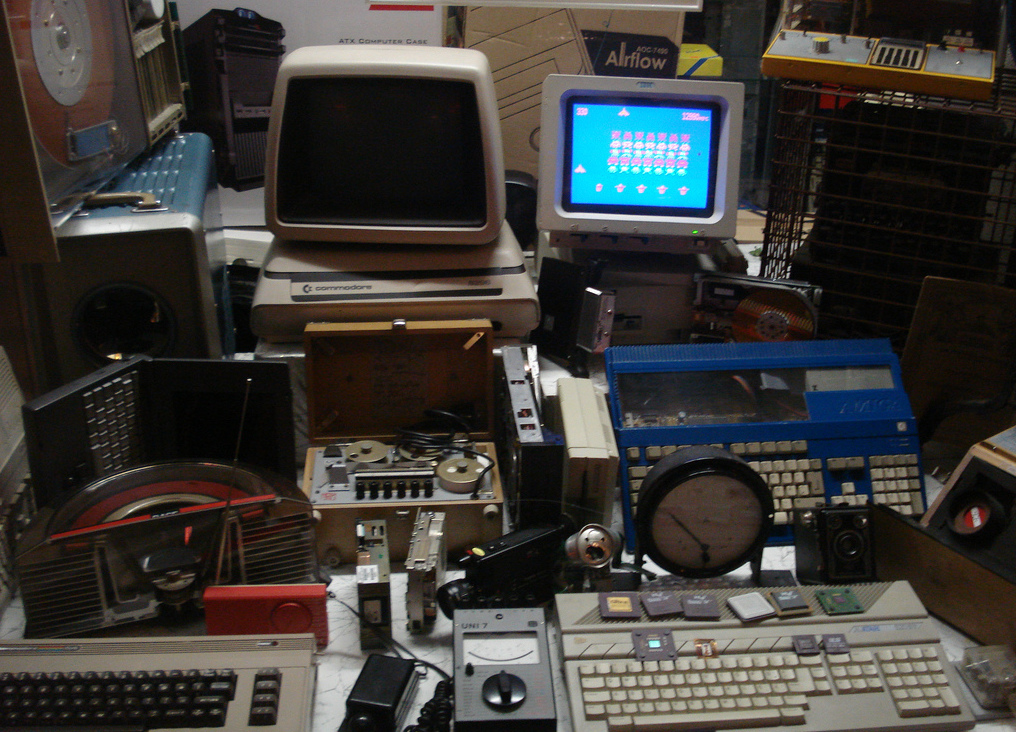Recently my wife was cleaning out the shelves and cabinets of our spare bedroom. Over time it had become the way station of forgotten gadgets, office supplies and memorabilia — the neglected rag and bone shop of the house.
In the process we discovered a treasure trove of technologies that filled us with amazement and nostalgia. There were a couple of shoeboxes full of cassette tapes. And, of course, a portable cassette player that only managed to play the first 30 seconds of a tape before it wheezed to a halt, dragging the music down three octaves as it died.
We couldn’t remember the last time we’d played a cassette. But, back in the ’70s, it was how we recorded and listened to most of our music. We even made custom mix tapes, which really, is adorable.
My wife also discovered a thin sheaf of carbon paper. Youngsters, this was a sheet you placed between two leaves of typing paper so you could make a real-time duplicate of words you typed on a manual typewriter. Which had no screen, or plug, or memory.
We marvelled at the acetates she found beneath the carbon paper. Kids, these clear sheets were placed on an overhead projector so you could present notes for a course. They were interactive multimedia in that you could draw on them with colour markers as you presented. Again, we hadn’t used acetates since before Fleetwood Mac released Rumors.
Then my wife struck gold — airmail paper. This, young padawan, was gossamer-thin parchment on which you would write letters to relatives across the ocean. Letters delivered by plane. Because international postage was so expensive, and you paid by weight, the invention saved you money.
In a forgotten drawer she found her first digital camera, an Olympus Camedia. When she purchased it in 2003, the device cost $1,400. It could take five-megapixel images that were stored on a 256K memory card the size of a Triscuit.
To put that in perspective, look at your smartphone. See those icons on the screen? The graphic for just one of those icons would fill up the memory card that came with the camera. And you can’t find a smartphone today that would take a paltry five-megabyte image unless you discover one at the bottom of an antique store remainder bin.
It’s easy for us to look back on the technologies of the past: cassettes, carbon paper or acetates and shake our heads in wry amusement. And, it’s natural for us to look at the pathetic digital cameras of the day and despair that something that cost as much as a contemporary laptop is just junk in a zip-locked bag destined for Value Village.
But the shape of the obsolescence curve hasn’t changed over centuries, just the slope.
In the past, manual technologies were supplanted by industrial ones. Take oil paint, for example. Painters from cave dwellers to Vermeer ground their own inorganic pigments. Then, in 1890, pre-mixed pigmented oil paints became available, then acrylics.
Some technologies were replaced because of mechanical advantage, some by economies of scale or a need for speed, still others because of advances in science. After the development of the transistor in 1947, vacuum tubes everywhere found their way into computer lab storage closets.
We might look back on older analog technologies like film cameras and bemoan how much longer useful life they have than the Olympus my wife bought and junked 15 years later.
But, a film camera from the ’70s easily outstripped a film camera from the ’40s and all but collectors would have chosen the ’40s version. There is no question of the quality, workshop and style of the earlier cameras, they are things of beauty. But function as well as form is a metric of commercial success and adoption.
Look in the window of any pawnshop and you’ll see what were once expensive SLRs collecting dust even though dirt cheap.
It would be great if my wife’s old Olympus was still useful. But then, we don’t regret that we don’t need carbon paper, acetates or cassettes.
And, in 20 years we’ll clean out a room and laugh at the thick, slow “smartphones” we actually once used to take pathetically low-resolution pictures, listen to music and “browse” the “internet.” So, we can’t both decry the pace of progress and obsolescence and benefit from its slope.
But still, airmail paper was pretty damned cool.
Wayne MacPhail has been a print and online journalist for 25 years, and is a long-time writer for rabble.ca on technology and the Internet.
Photo: Nathan/flickr





